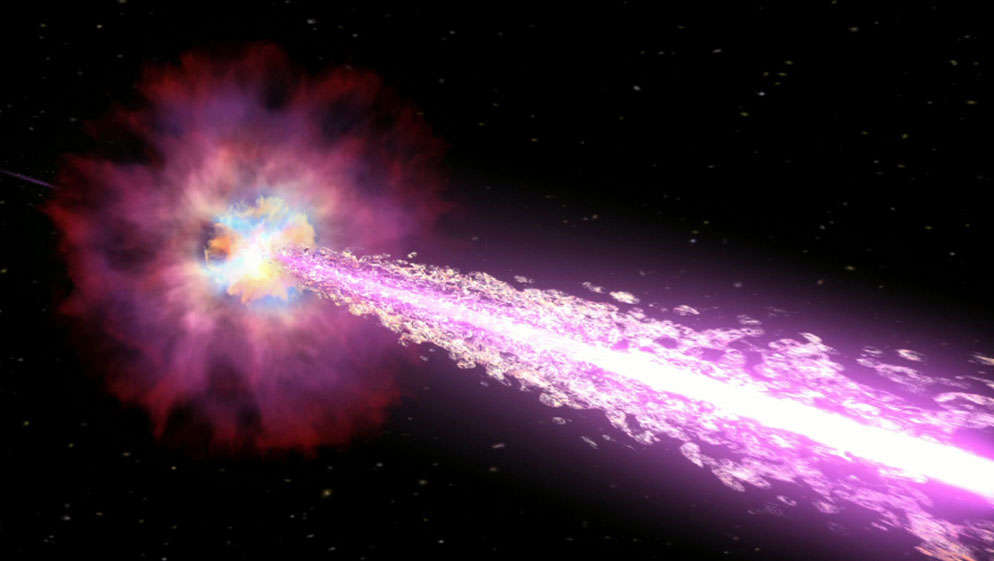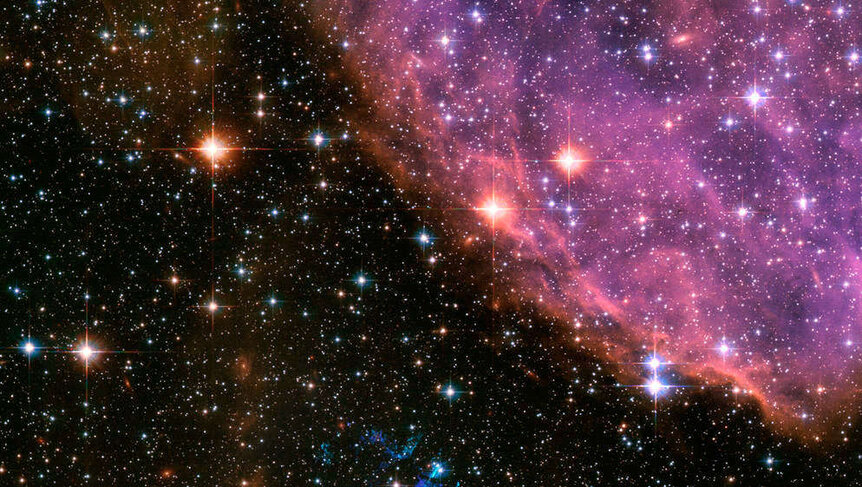Create a free profile to get unlimited access to exclusive videos, sweepstakes, and more!
Has the safest place for life in the Milky Way been found?

If life were to exist on the surface of a planet, the best real estate in the galaxy might be right near the middle. Just ignore the supermassive black hole when you get there.
While it might be surprising that even Earth is not located in the ideal place for life to thrive in the Milky Way, we’re close. New research has found that life would have the best chance of making it on a planet or moon floating around the center of the galaxy, which has had the least supernovas, gamma ray bursts and other space monstrosities for the last 11 billion years. The scientists even think that because Earth was in the edge, it was possibly a certain gamma-ray burst that caused the second worst mass extinction ever.
Earth is actually on the edge of that region, about 26,000 light-years from the galactic core where that aforementioned black hole lurks. Its borders were safer when the galaxy was just emerging. Things changed later.
“We assess[ed] the habitability of the Milky Way (MW) throughout its cosmic history against potentially disruptive astrophysical transients with the aim of identifying the safest places and epochs within our galaxy,” said astronomer Riccardo Spinelli, who co-led a study recently published in Astronomy & Astrophysics.
Extraterrestrial life-forms probably have the best chance at survival in the subsurface oceans of frozen planets encrusted in nearly impenetrable layers of rock and ice. Just about anything could hit a planet like that without creatures in the depths even sensing it, which is why Earth might be a rarity, but imagine another hypothetical planet with life exposed to phenomena in space. We already go through enough. Our planet is exposed to killer radiation, gamma-ray bursts, freezing molecular clouds and the threat of comets and asteroids. Life on Earth has almost been annihilated several times — which is nothing compared to Mars.
The same hazards Earth can’t escape are what other planets need to avoid if living organisms are going to stay there for a while. If a star goes supernova, all best are off. Any orbiting planets will probably be sterilized. To find out where this is unlikely to happen, Spinelli and his team modeled how stars in the Milky Way formed and evolved to find out which areas were most likely to be radiation-bombed billions of years ago. From the innermost parts of the galaxy to some 33,000 light-years out, there was way too much star formation (and all the plasma and turbulence that comes with it) for anything to stay alive for long.
Maybe if you’re a cockroach, you’d have a chance. Roaches can potentially survive atom bomb-level radiation. Just about anything else would be doomed.
“The lethality of transient astrophysical events depends on their energy released as high-energy radiation and their occurrence rate in the Galaxy,” Spinelli said. “More powerful events can be lethal for a planet over larger distances, while a high event rate can also reduce the ability of the planet to recover from the environmental effects.”
After measuring just how fatal different types of space phenomena can be, the team found that long-duration gamma ray bursts (LGRBs) are the most dangerous events for planets or moons trying to hold on to life. The amount of energy they release can take down an entire planet. In the middle of the Milky Way, life’s worst enemies are short-duration gamma ray bursts and supernovas, though they are unlikely to happen. Not that life could take it if they did. At least Earth is only at a slightly higher risk for getting slammed by either of those.
As for our planet, one asteroid zoomed right by us in the last month and the asteroid Apophis is officially no threat, so we can breathe a sigh of relief…for now.















